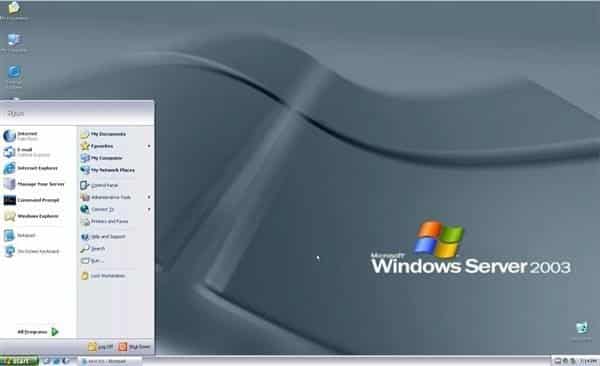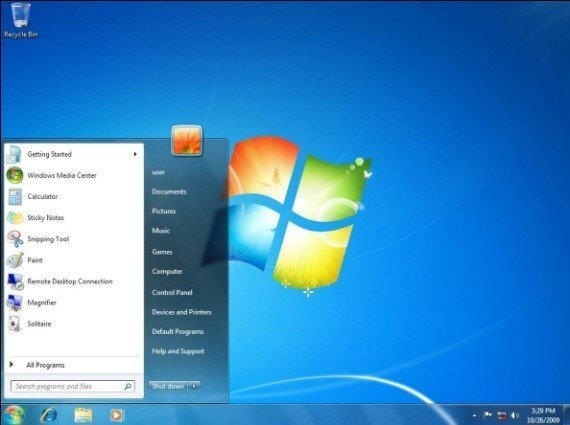Estimated reading time: 6 minutes
Call it evolutionary, revolutionary, contemporary, or just captivating. The world’s dominant OS has been the staple technology running millions of devices owned by individuals and businesses across the world over the last 3 decades. Millennial’s would remember growing up playing Minesweeper as their first PC game and probably cannot imagine a world without Windows. Let’s take a short journey back in time to see how it has evolved over the years; which were the landmark versions, and which brought lukewarm response.
Windows 1
Brought to the world first in November 1985 by Bill Gates. It ran on MS-DOS and provided a GUI in 16 bit. It had icons, drop-down menus, dialog boxes, and ran with 1 MB of memory. It featured a calculator, a notepad, file manager, Windows Paint, and a game called Reversi.

Windows 2.0
Launched in December 1987, it introduced a new graphical application, a control panel and Excel and Word. It was available in 286 and 386 versions and ran on 16 bits. Windows could overlap each other for the first time.

Windows 3.0
Launched in May 1990 with 16 colours VGA, and for the first time used a hard drive. File Manager, Program Manager and Print Manager made their appearance. This was faster with virtual memory, and could run in protected mode. This was immensely successful and sold 10 million copies within 2 years.

Windows 3.1
True Type fonts were introduced for the first time in this 1992 release along with the popular game Minesweeper. This was the first time Windows was distributed on a CD. MS-DOS programs could now be controlled by a mouse. The system ran on 1 MB of RAM. Windows 3.0 and 3.1 put together sold over 10 million copies. Later version also had native network support with computers being connected to servers.

Windows NT 3.x
Launched in July 1993 as a 32-bit OS, it boasted of NTFS file system and advanced network connectivity.
Windows 95
Released in August 1995, this OS running on 32-bits introduced the ‘start’ button, start menu with plug and play features, and the Internet Explorer for the first time. This also featured the maximize, minimize, close button and a taskbar. It required 4 MB RAM and operated in 386 enhanced mode.

Windows NT 4.0
Released in July 1996 in 32-bit, and was available in server and workstation versions with Windows 95 as the UI.
Launched in June 1998, this faster version of OS came with the FAT 32 file system, Outlook Express, IE4, Windows Address Book, Quick Launch, and Microsoft Chat. The Windows 98 SE replaced NetShow Player with Windows Media Player 6.2, and supported DVDs and USB devices like pen drives and mice. The Internet Explorer came with an address bar and back and forward navigation buttons. Several machines on a LAN running on Windows 98 could now share one single internet connection. The SE version was touted to be the most stable version in the 9x series.

Windows ME
Released in September 2000, this was the last version based on MS-DOS and catered to the enterprise market. System Restore and recovery tools were introduced for the first time. The OS featured Windows Movie Maker and Media Player 7, with an Auto Complete feature in Windows Explorer. This happened to be the last OS to be based on Windows 98.

Windows 2000
Released in February 2000, it penetrated the workstation and server markets. It featured an Active Directory, automatic updates and hibernation. It boasted of enhancements in networking, internet capability, USB support, and a Windows server domain with LDAP, DNS and Kerberos technologies for machine to machine connection.

Windows XP
Released in October 2001, this proved to be the longest in use and most successful Windows version, providing support until 13 yrs after its launch. Based on the Windows NT 5.1 kernel, this OS came with an enhanced task bar and start button with CD burning, autoplay and auto recovery tools. ClearType enhanced readability on the LCD screen. Its service packs brought in enhanced security Windows XP ran on an estimated 430 million PCs at the time it was discontinued.

Windows Server 2003
Launched in April 2003, this came with a Manage YourServer wizard. This stripped down some features not required for the server environment such as themes and audio functionality. The R2 release in December 2005 signified a service pack 1. However, it was not released for Itanium.

Windows Vista
Released in January 2007 with support for 35 languages. The start button was redesigned (oval in shape), and a new AERO GUI was created. It also introduced DirectX 10, Windows DVD Maker, Windows Media Player 11, IE 7, and games such as Purple Palace and Mahjong. BItLocker encryption, Windows Defender, anti-spyware, and user account control were brought in for beefing up protection.

Windows server 2008
Released in February 2008, this was the server edition of Windows Vista with features such as network access protocol, PowerShell, and enhanced IIS and SMB file sharing protocol.

Windows 7
Launched in October 2009, this is believed to be the most widely used and successful Windows version yet, fixing all the issues faced with Vista. Windows 7 was stable and provided a faster booting experience than its predecessors with multi-touch feature. It additionally features Windows PowerShell.

Windows 8
Released in October 2012, after Microsoft took a bold step of doing away with the traditional start button and start menu and introducing the Windows store. Continuing with the multi-touch functionality of Windows 7, this faster version saw a tiled interface at the start screen, which looked more like widgets. It also provided support for USB 3.0 devices. This version was especially designed for laptops and tablets.

Windows 8.1
After the unpopular move of doing away with the start button, Microsoft brought it back in Windows 8.1, which was offered at no cost to existing Windows 8 users. This also signified the practice of providing yearly updates.
Windows 10
Released in July 2015, Windows 10 is offered to existing customers of Windows 7 or later versions at no extra cost, for a period of 1 year. This boasts of features such as Cortana, Microsoft Edge browser, Action Centre, Continuum, unified settings. And yes, it has the start button. This is believed to be the last OS version to be released by Microsoft, with patches and upgrades being provided on an ongoing basis.

You can see a tutorial of How Cortana Comes to Life in Windows 10

Share this content:


